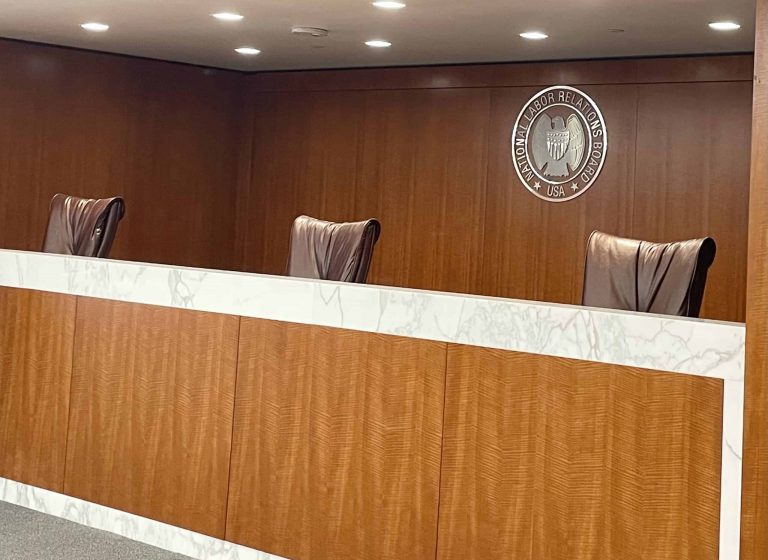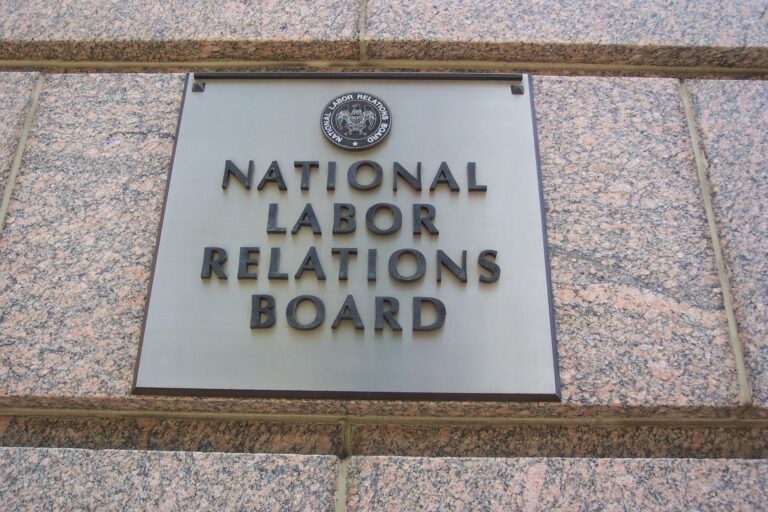Hunter Southall is a student at Harvard Law School and a member of the Labor and Employment Lab.
The Incarcerated Workers Organizing Committee (IWOC) announced this fall plans to organize collective demonstrations within every prison, jail, and ICE detention facility in North America. They are demanding prison reform and the end of what they call “legalized enslavement.” Incorporated in 2014, IWOC is a prison-led chapter of Industrial Workers of the World (IWW), a National Labor Relations Board–certified labor union representing nearly 9,000 workers from all industries in the US. However, none of the prisoner-led unions of IWW are recognized by the NLRB. Outside of prison, IWOC has 21 locals across 16 states and DC, as well as a UK branch, and they are actively trying to expand within prisons. As of September
2022, two IWW branches were chartered inside prisons, with two more forming.
The “Shut ‘Em Down 2022” demonstrations, a collaborative effort between IWOC and Jailhouse Lawyers Speak (JLS), were scheduled to occur from August 21st to September 9th, 2022. However, as of November 2022, there have been reports of statewide strikes but no news of a nationwide prison riot. (Note: Prison riots have notoriously gone unreported and are covered up by prison officials.)
By disrupting normal prison operations, organizers hope to bring awareness to the prison abolition movement, with the goal of repealing the Thirteenth Amendment’s exception to slavery. To this end, they ask incarcerated people to participate in labor and hunger strikes, work-equipment sabotage, boycotts, and sit-ins with them. In addition, they are calling on supporters, both in and outside of prison, to lift up their four demands:
1. Repeal of the Thirteenth Amendment’s slavery exception.
2. Closure of most jails and prisons in all states, including federal prisons.
3. Closure of all private prisons.
4. Release of all political prisoners in US prisons.
The coalition’s most recent demands mirror ten demands made by strikers in 2018, which included access to rehabilitation, voting rights, and reinstatement of parole. IWOC and JLS planned to model Shut ‘Em Down 2022 after the National Prison Strikes in 2016 and 2018 that they also championed.
Inmates’ strikes serve not only as a form of expression but also as a method to call attention to inhumane prison conditions and seek relief from the government. In 2016, more than 24,000 incarcerated people marked the 45th anniversary of the Attica prison uprising with a nationwide prison strike — the largest in US history. They protested forced labor, overcrowding, and generally unsafe living conditions. Despite prison officials’ efforts to restrict press access to prisons during the strike, residents of Alabama’s Holman Correctional Facility used a contraband cell phone to film and release videos of their demonstrations. Weeks after the videos were publicized, the U.S. Department of Justice announced a statewide investigation into the conditions of Alabama’s prisons.
On December 9, 2020, as a result of the investigation, the DOJ filed a lawsuit against Alabama alleging that “conditions at Alabama’s prisons for men violate the Constitution because Alabama fails to provide adequate protection from prisoner-on-prisoner violence and prisoner-on-prisoner sexual abuse, fails to provide safe and sanitary conditions, and subjects prisoners to excessive force at the hands of prison staff.” The DOJ reported in November 2021 that the conditions have not improved and that violence remains unabated. The lawsuit is ongoing.
While strikes can achieve redress for aggrieved inmates, incarcerated workers do not have collective bargaining rights afforded to most employees. This is because the Thirteenth Amendment abolished slavery everywhere in the United States, except as a punishment for crime. Today, partly due to this caveat, more than 900,000 inmates work full-time in American prisons for little to no compensation. The median wage for state and federal prisoners is only around 20 and 31 cents per hour, though, legally speaking, there is no obligation to pay prisoners for their labor. In fact, in five states — Alabama, Arkansas, Florida, Georgia, and Texas — most incarcerated workers are not paid.
Inmates can also be forced to labor in undesirable, often dangerous, work conditions so long as their labor is not at odds with the Eighth Amendment’s ban on “cruel and unusual punishment.” Generally, prisoners are subject to work under a vague requirement that if they are able-bodied, then they must work. Notwithstanding any mandate to work, for many inmates, working is a financial necessity.
Unionizing may seem like an obvious next step. It is unclear, however, the extent to which incarcerated workers have a legal right to associate. Prisoners likely do not qualify as protected employees under federal labor law, such as the Fair Labor Standard Act and the National Labor Relations Act. Recently, in Ndambi v. CoreCivic, Inc., the Fourth Circuit declined to extend the FLSA protection to detained immigrant workers, concluding that workers in custodial detention, like incarcerated workers, fall outside the “traditional employment paradigm” the FLSA was designed to protect.
Moreover, nearly 45 years ago, the Supreme Court held that the First Amendment does not afford incarcerated workers an incontrovertible right to unionize in Jones v. North Carolina Prisoners’ Labor Union, Inc. Though it was not a point of contention, the Court noted, “[I]t is clear beyond argument that no association of prisoners may operate as a true labor union pursuant to the NLRA.”
In Jones, the plaintiffs, approximately 2,000 members of a prisoners’ union, argued that a prison rule prohibiting union meetings among inmates violated their freedom to associate. The Court concluded that the plaintiffs’ “status as prisoners” necessarily imposed limitations on their constitutional rights. Writing for the majority, then-Justice Rehnquist stated, “A prison inmate retains those First Amendment rights that are not inconsistent with his status as a prisoner or with the legitimate penological objectives of the corrections system.” Thus, barring novel legislation that deems prisoners employees, it is dubious that incarcerated workers can function as a true labor union.
Still, the recent shift in mainstream views on criminal justice reform may be pushing prisoners’ rights advocates to advance, once again, the question of the desirability of incarcerated-worker labor unions. For example, of the shift in mainstream attitude, in Alabama, Oregon, Tennessee, and Vermont, voters have approved ballot measures that would amend their constitutions to prohibit slavery and involuntary servitude as a punishment for crime. While these efforts may provide a legal basis for new challenges related to the use of prison labor, they will not immediately affect conditions within their states’ prisons.
Unless additional changes are made to the law, incarcerated workers will face backlash for demonstrating. Writing for the Guardian from solitary confinement, Kevin R. Johnson, who has led prison strikes for over three decades, says as punishment, he has been “starved, beaten, dehydrated, put in freezing cold cells, attacked with attack dogs, rendered unconscious, [and] chained to a wall for weeks.” In 2020, attorneys for a prisoner in a Brooklyn jail reported their client was thrown in solitary confinement simply for speaking to a news channel about a deadly COVID-19 outbreak in his unit.
Ending the inhumane treatment of incarcerated people will take a mass movement in and outside prison. When inmates face retaliation, the public can often defend them by participating in phone zaps or letter-writing campaigns targeted at state, local, and federal representatives.









Daily News & Commentary
Start your day with our roundup of the latest labor developments. See all
June 30
Antidiscrimination scholars question McDonnell Douglas, George Washington University Hospital bargained in bad faith, and NY regulators defend LPA dispensary law.
June 29
In today’s news and commentary, Trump v. CASA restricts nationwide injunctions, a preliminary injunction continues to stop DOL from shutting down Job Corps, and the minimum wage is set to rise in multiple cities and states. On Friday, the Supreme Court held in Trump v. CASA that universal injunctions “likely exceed the equitable authority that […]
June 27
Labor's role in Zohran Mamdani's victory; DHS funding amendment aims to expand guest worker programs; COSELL submission deadline rapidly approaching
June 26
A district judge issues a preliminary injunction blocking agencies from implementing Trump’s executive order eliminating collective bargaining for federal workers; workers organize for the reinstatement of two doctors who were put on administrative leave after union activity; and Lamont vetoes unemployment benefits for striking workers.
June 25
Some circuits show less deference to NLRB; 3d Cir. affirms return to broader concerted activity definition; changes to federal workforce excluded from One Big Beautiful Bill.
June 24
In today’s news and commentary, the DOL proposes new wage and hour rules, Ford warns of EV battery manufacturing trouble, and California reaches an agreement to delay an in-person work mandate for state employees. The Trump Administration’s Department of Labor has advanced a series of proposals to update federal wage and hour rules. First, the […]